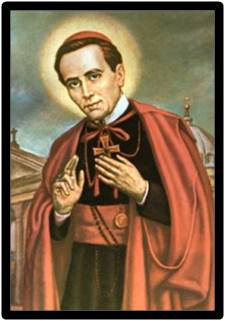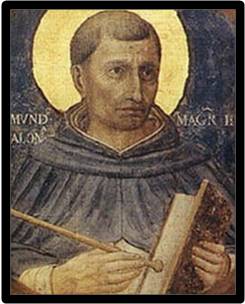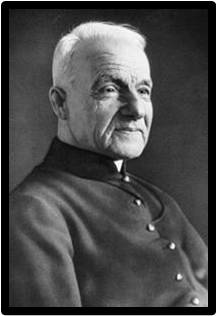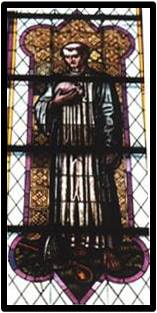JANUARY 5 - ST. JOHN NEUMANN

John Neumann was born in Bohemia, now part of the Czech Republic. He was a quiet small boy, only five feet, two inches tall but his eyes were very kind and he smiled a lot. His parents were Philip who was a German and Agnes Neumann who was Chez. He had four sisters and a brother.
He was an excellent student, who was drawn to the religious life when he was quite young. After college, John entered the seminary. When time came for ordination, the bishop was sick. The date was never set because Bohemia had enough priests at the time.
Since he had been reading about missionary activities in the United States, John decided to go to America to ask for ordination. He walked most of the way to France and then boarded the ship Europa for America.
John arrived in Manhattan on June 9, 1836 without informing anyone that he was coming. Bishop John Dubois was very happy to see him as there were only thirty-six priests for the two hundred thousand Catholics living in the state of New York and part of New Jersey.
Just sixteen days after his arrival, John was ordained a priest and sent to Buffalo. There he helped Father Pax care for his parish, which was nine hundred square miles in size. Father Pax asked him to choose between working in the city of Buffalo or the country area. Now John’s strong character began to show when he chose the most difficult - the country area.
He decided to stay in a little town with an unfinished church. Once it was completed, he moved to another town that had a log-church. There he built himself a small log cabin. He hardly ever lit a fire and often lived on bread and water. He only slept a few hours each night.
The farms in his area were far apart. John had to walk long distances to reach his people. They were German, French, Irish and Scotch. But John who knew twelve languages, worked with them all.
John joined the Redemptorist order and continued his missionary work. He became bishop of Philadelphia in 1852. Bishop Neumann built fifty churches and began building a cathedral. He opened almost one hundred schools, and the number of parochial school students grew from five hundred to nine thousand.
Bishop Neumann’s health never improved much, but people were still very surprised when he died suddenly on January 5, 1860 when he was just forty-eight years old.
He was the first American man and first American bishop to be declared a saint by Pope Paul VI on June 19, 1977.
We might not be as smart, strong, or active as we would like to be. But that doesn’t stop God from loving us and from using us to do wonderful things. When we have to do something difficult, we can ask St. John Neumann’s help.



